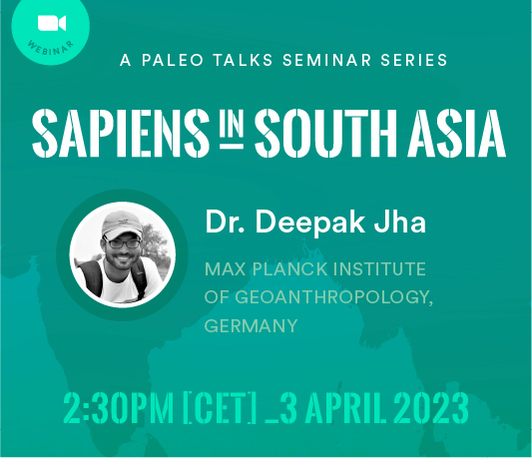Late Quaternary human-environment relationship in India: perspective from plant lipids and multi-isotope (2H, 18O, 13C) analyses
Sapiens in South Asia
- Date: Apr 3, 2023
- Time: 02:30 PM - 03:30 PM (Local Time Germany)
- Speaker: Dr. Deepak Jha
- Postdoctoral Researcher, Department of Archaeology, MPI GEA
- Location: Zoom
- Host: Department of Archaeology
- Contact: gjha@shh.mpg.de

The Quaternary period, also known as the "Age of Humans," is characterized by an abundant fossil record of Homo species around the globe. This period has undergone remarkable changes in global climate, leading to the extinction of numerous mammalian species and possibly influencing the evolution of Homo species. Although early Homo species' fossil records are absent from the Indian subcontinent, various stone tools/artefacts discovered from sedimentary deposits of the Quaternary age indicate the presence of prehistoric humans skilled in tool-making. Based on the morphology and typo-technology of excavated artefacts, it is suggested that prehistoric humans in the studied region used Paleolithic to Neolithic tools. However, the age of the prehistoric phase is still a matter of curiosity and needs further investigation. Therefore, understanding the role of climate in Homo evolution requires complete control over the age of prehistoric phases.
To investigate this, we selected fluvial sections of the Belan valley in north-central India, which preserve the signature of prehistoric human settlement from the Paleolithic (~100 ka) to Neolithic (~3 ka) cultural phases. For the first time, we explored the potential of plant-wax biomarkers and their compound-specific isotope analyse (CSIA; δ2HC29 and δ13CC29) on Pleistocene archaeological sites from the Indian subcontinent. Moreover, we also analyzed the isotopes of oxygen and carbon in soil carbonates (δ18OSC and δ13CSC) collected from the same archaeological sites to provide the multi-proxy evidence of paleo-environment change during the transition of prehistoric phases in the studied region. This is the first time such multi-proxy analysis has been conducted in this context from the Indian subcontinent.